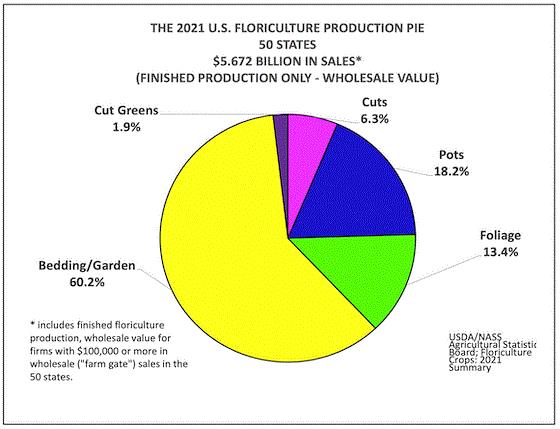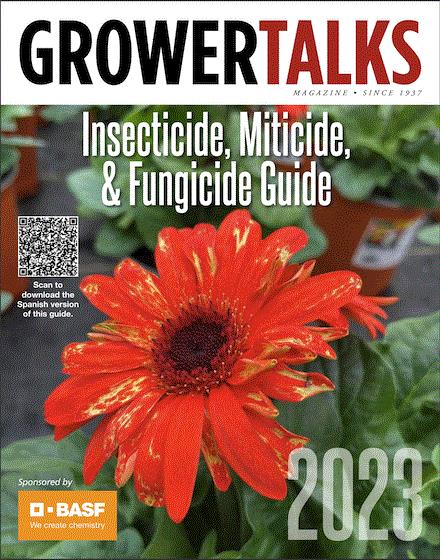September Farm Update
Every time I write a farm update I reflect on what we have going on at the farm and I think to myself, “Wow, this is my favorite time of year.” Truth is, I love every month on the farm ... well, except October, during dahlia-digging season.
September is truly a sight to behold on the farm. I start getting ready to say goodbye to our summer favorites and hello to spring. But right now we have our sights set on getting beds flipped around in the greenhouse and ready for successions of stock, snaps and our other spring offerings. Tater and the Forget Me Not crew started a ton of cool-season flowers last month, including calendula, pansy, campanula, godetia and forget-me-not, to name a few. We are in the middle of constructing another cold frame in the hopes of adding to our late May and early June flower offerings. We are running a tight timeline for getting the cold frame finished and covered in time for plants to establish before winter. Tight timelines seem to be a common theme at the farm the last few years—fingers crossed we finish in time like we usually do. Also we have another greenhouse kit coming in the next few weeks. Needless to say, the fall docket is full of projects!

Fingers (and paws) crossed we get our anemone and ranunculus corms soon—Valentine's Day depends on them!
We are also eager to start our anemone and ranunculus corms. Between anemone shortages and late shipping, Tater and I had to pivot. (The mantra of the last two years, am I right?!) We are champing at the bit for our new anemone and ranunculus corms. We typically receive them by the first week of September. We immediately sow a batch in hopes to hit Valentine’s Day. But with the delay, I am not sure if that will be a reality for 2023. Fingers crossed we receive them by early next week.
The last two years have taught me to be compassionate and gracious to suppliers. At the end of the day everyone is doing the best they can. But our customers are really counting on us for flowers and I don’t want to let them down. The local cut flower movement in Michigan is gaining momentum and the demand in spring is out of this world!
Having our panda anemone order completely cut was tough, but we managed to find another source (shout out to
Onings for having panda anemones for immediate shipping!). This summer, our clients relied heavily on us for an assortment of flowers and we are barely keeping up. I really underestimated how much people would want our flowers, especially since there are lingering supply chain shortages and also shifts in consumer demand.
Which, in theory, is a great problem to have, but Tater and I also have to meet our clients' needs. It is important that your clients have confidence in you as a producer. It’s a balancing act. The challenge I have been running into is growing into the demand quickly. Five years ago our farm was a corn field. We have invested a lot and worked incredibly hard to create the facility we have. But we still need more. It's a balancing act deciding how much to reinvest in facility improvements. Once Tater and I have it all figured out I promise I will write the book on all of this, but in the mean time we’re buckling up and getting ready for the ride.
One of the highlights of this issue of Bloom Beat is Dr. Marvin Miller’s recap of the 2021 USDA Floriculture Crops Summary. We know the demand for American-grown flowers is rapidly increasing. But it is nice to have quantifiable data illustrating this. Read on to learn more. With all that being said, let’s talk shop!

A Cut Above—Cut Flower Stats
This next item was forwarded to me by Bossman Chris Beytes—it’s an overview—including a detailed look at cut flowers—of the recently released USDA Floriculture Crops Summary for 2021 by Dr. Marvin Miller, market research manager for Ball Horticultural Company (parent company of Ball Publishing and Bloom Beat). “Nobody can crunch the USDA data like Marvin,” Chris says, so we are running it just as he wrote it:
USDA’s National Agricultural Statistics Service released the Floriculture Crops: 2021 Summary for the 2021 calendar year in late May. This survey now details production and sales for all 50 states, 28 of which are separately enumerated, while the other 22 are grouped into “other states.” This compares to only 17 states previously included in the program in 2020. This report also has added 30 new crops to the annual report, which has increased the program coverage for all industry segments.
In total, there were 9,558 producers in 2021 contributing data to the report, and these firms had total sales of $6.43 billion. Of these, 3,610 firms (37.8%) reported sales of $100,000 or more. It is only these larger firms, which had total sales of $6.179 billion, that provide the data for further crop-by-crop analysis of the domestic production for the U.S. floriculture industry in this annual report. As there were $507.29 million in sales of propagative floriculture materials (including pre-finished plants), the total finished floriculture sales were $5.672 billion.

In total, 404 of these larger firms reported sales of cut flowers, and 153 firms reported sales of cut cultivated greens. These firms generated sales of $359.8 million for cut flowers and $105.4 million for cut cultivated greens in 2021. Together, sales of cut flowers and cut cultivated greens accounted for 8.2% of total finished domestically produced floriculture sales in 2021. Sales of cut flowers for the 17 so-called “program states” that appeared in both the 2020 and 2021 reports rose 12.8% in 2021 over the 2020 totals for these larger cut flower growers. A similar comparison for cut cultivated greens showed a 17.3% increase in sales of cut cultivated greens for 2021.
Of the 28 separately enumerated floriculture production states in the report, 26 reported some cut flower sales and 16 reported some sales of cut cultivated greens. Top cut flower states in 2021 were California ($220.5 million), New Jersey ($31.89 million), Washington ($21.46 million), Oregon ($17.86 million), Pennsylvania ($10.6 million), North Carolina ($10.18 million), and Hawaii ($8.3 million). Top states for cut cultivated greens included Florida ($84.97 million), California ($17.02 million) and Oregon ($2.15 million).
In terms of dollar sales, the top cut flowers reported by these larger growers include tulips ($73.8 million), lilies ($58.3 million), gerbera daisy ($22.2 million), gladioli ($15.0 million), roses ($13.7 million), sunflower ($12.1 million), peony ($10.8 million), orchids ($8.3 million), asters ($7.4 million), iris ($6.7 million), snapdragon ($5.9 million), dahlias ($5.8 million), protea ($5.0 million), wax flowers ($4.8 million), pompon chrysanthemums ($4.1 million), delphinium and larkspur ($3.8 million) and lisianthus ($2.8 million). There was also an “all other cut flowers” category with sales of $99.2 million.
Of the 17 separately enumerated cut flowers, the data, as reported, identify California as the top-producing state for nine of these crops: aster, dahlia, delphinium and larkspur, gerbera daisy, lilies, lisianthus, orchid, roses and snapdragon. California producers also likely lead production for some of the other crops where data was not disclosed. California also dominates the sales of the “other cut flowers” category. Oregon is the top reported state for sales of peony, while New Jersey was the top state for sales of sunflowers and the top separately identified sales leader for tulips.

Sales of leatherleaf ferns were the top separately enumerated cut cultivated green, with reported sales of $39.9 million. Sales of other reported greens include Pittosporum ($6.6 million), Eucalyptus ($5.1 million), asparagus, tree fern ($4.2 million), Aspidistra ($2.9 million) and “other” cut cultivated greens ($46.7 million). According to the reported 2021 data, Florida growers collectively dominate sales of four of these greens but likely also dominate sales of Leatherleaf ferns, though this is not disclosed for 2021 sales. California producers dominate sales of Eucalyptus.
Going forward, it will be interesting to analyze the crop trends for the various cut flower and cut greens categories. This is a little challenging this year due to the altered survey procedures initiated with the 2021 report. However, considering the double-digit percentage increases reported for the 17 program states, the outlook appears promising!—Marvin N. Miller

Green Career Week
It is no secret that there is a labor shortage in every segment of the green industry. And to be quite frank, it is our responsibility as business owners to be a part of our communities and show our youth that there are plenty of viable green industry careers! And a great way to do that is by connecting with your local high school students.
I have great news: Seed your Future is kicking off the first annual Green Career Week this year, October 3-7. Green Career Week is a national campaign where industry leaders and professionals connect with local high schools to showcase the various career paths at their businesses. Seed Your Future makes it easy by creating all the tools you need to help you connect with your local high school agriscience teachers and students. Go to THIS LINK to sign up for their media kit.
 They have everything you need, from sample email templates for you to send to teachers, activity ideas to engage students, and photo releases. Oh, and don’t forget to use the hash tags in their social media tool kit!
They have everything you need, from sample email templates for you to send to teachers, activity ideas to engage students, and photo releases. Oh, and don’t forget to use the hash tags in their social media tool kit!
Tater and I are excited to be a part of Green Industry Career Week this year, and I urge you to use this opportunity to connect with your local high school agriculture programs. Cut flowers are a unique facet of industry and one that doesn’t immediately come to mind as a career path. Parents aren’t aware of our industry either, which presents a different set of challenges, which is why we need to be at the forefront and actively market ourselves and teach young people about what we offer as a career path.
Full disclosure: When I was growing up I wanted to be a veterinarian and a swim teacher (interesting combination, I know). I fell in love with plants in high school by getting involved in Future Farmers of America. It wasn’t until I was a senior in college that I accidently stumbled across cut flower farming (this is a story for another time). Now Tater and I are fully invested in cut flower farming and the cut flower movement.
My point is that a little exposure goes a long way—I’m living proof! Green Career Week is a great way for you to give some young people insight into your world. And who knows, one of them might catch the flower bug like you did (and hopefully will want to work on your farm!). Here is the LINK to sign up for Green Career Week.
While there, check out the rest of the website. They are doing some awesome things to recruit youth into our industry.

The 2023 Insecticide, Miticide & Fungicide Guide
Here is another awesome resource to keep in your back pocket. In the latest edition of the Insecticide, Miticide & Fungice Guide, brought to you by GrowerTalks and BASF, you will find updated fungicide chemical class charts, updated insecticide and miticide charts, and important information about pre emergent herbicides.

My favorite part of this guide is the article on beneficial nematodes. BASF highlights some tips and tricks on how to be successful with them. We experimented with some foliar applications of nematodes this season. You can apply nematodes to soil, as well. Tater and I plan to incorporate drench applications into our IPM plan. Nematodes were one of the production wins we had this season. If you are new to nematodes, this is a great primer to learn about them.
BASF also highlights chemistries that are compatible with biological control programs. Keep this guide handy, as it contains a lot of great information; and as you compare your IPM notes from this season, be sure to reference the guide.
As a bonus, it's also available in SPANISH.
Thank you, BASF, for sponsoring this great resource—Tater and I appreciate it!

A Few Screws Loose ... Seals, Actually!
I often talk about how people are your farm’s best asset, your soil and substrate is second. Can you guess what the third is? Your equipment—specifically, your tractor!
We have a few different types of tractors on the farm. For our greenhouse crops we love our compact Kubotas. We have four B7100 tractors with different loaders and attachments on them. What can I say, they are incredibly handy, and the three-speed PTO is a dream!
This week, we found a front seal leaking on one of our B7100s. A leaky seal can cause major problems if you run your tractor with no lubrication inside the front axle. Essentially, the shaft inside the front axle is turning while your tractor moves forward. The seal keeps grease inside the gear box and keeps the bearings lubricated. If there is a leak, over time the reservoir for lubrication will be empty. All your moving metal parts will be rubbing against each other with no lubrication and then you run into serious trouble—it can ruin your tractor.

This is our 16-horsepower Kubota B7300. It makes a great perch for Tater, too.
Small leaks on tractors can lead to costly repairs, especially on smaller tractors, which have smaller reservoirs for liquid, meaning you run out of fluid faster! But being observant and checking over your equipment before each use can save you a ton of heart break—and cash!
After we finish using a tractor for the day we park it in a level spot. The following morning we look for oil and grease leaks on the ground. Even if you just purchased a new tractor from the dealer, you want to make sure you check the fluids before you start it up for the first time. If you operate any tractor, new or old, with low fluid levels, it creates excessive wear and can cause a lot of damage.
The moral of the story? We are taking our special little Kubota to the mechanic to repair the front end. It’s important to fix things when they first show signs of trouble versus continuing to operate the equipment and exacerbate the problem. If you aren’t checking your equipment before and after each operation you should be. HERE is a handy little checklist for you to look over to get yourself acquainted with looking over your tractors.

In Closing
Thank you for reading this extra-long edition of Bloom Beat! Tater and I hope you have a strong finish to your season. Here in Michigan we have about four weeks left. Keep running your race, and we will see you next time!
Talk Soon!
Lindsay Daschner (and Tater)
Editor-at-Large—Bloom Beat
Owner—Forget-Me-Not Farms
This email was received by 4,875 of your fellow fresh-cut flower growers!
If you're interested in advertising in Bloom Beat, contact Kim Brown ASAP and she'll hook you up.